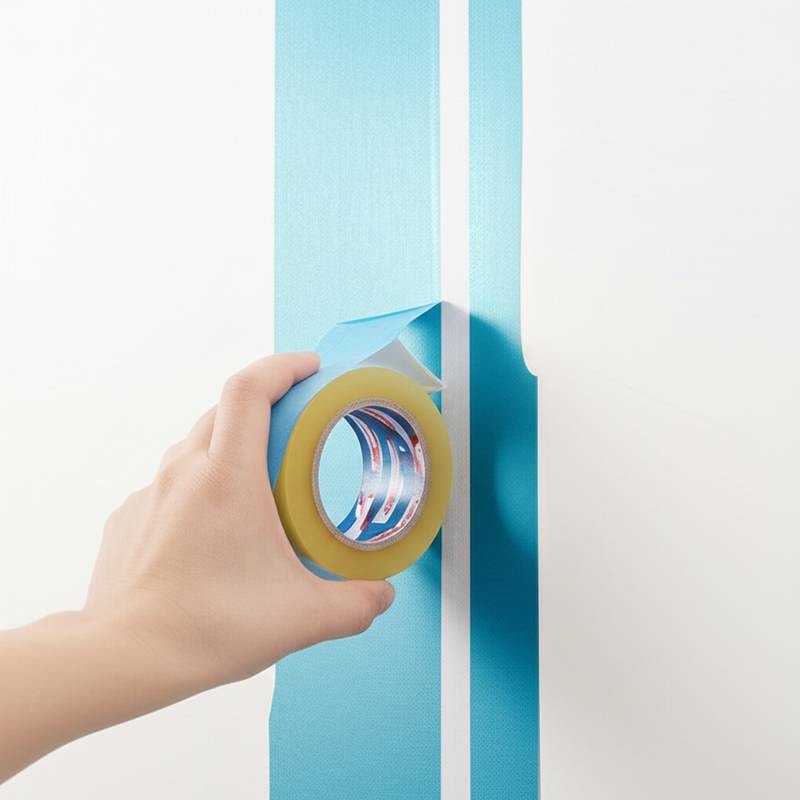Professional Taping Techniques to Halve Painting Prep Time
Effective painting projects begin with thorough preparation, yet this phase often consumes the most time. Professional painters achieve superior results by optimizing their taping methods, which can reduce prep time by up to 50 percent while maintaining precision. These techniques focus on selecting appropriate materials, preparing surfaces correctly, and applying tape strategically to ensure clean lines and protected areas.
Essential Principles of Professional Taping
Taping serves as a critical barrier that defines edges, safeguards adjacent surfaces, and prevents paint bleed. The distinction between novice and expert application lies in attention to detail, including surface condition, tape selection, and removal timing. By following a structured approach, painters can handle projects ranging from a single room to an entire interior with efficiency and confidence.
Step 1: Prepare Surfaces for Optimal Adhesion
Surfaces must be free of contaminants to ensure tape adheres securely and creates a reliable seal. Start by cleaning the area with a mild detergent solution or a damp cloth to remove dust, grease, or fingerprints. Allow the surface to dry fully, then perform a light sanding on any rough spots, such as trim or textured walls, using fine-grit sandpaper. Finish by wiping with a dry microfiber cloth to eliminate residual particles, which promotes better tape contact and sharper paint edges.
Step 2: Select Tape Based on Project Needs
Choosing the correct tape type is fundamental to achieving durable adhesion without surface damage. Consider the substrate material, project duration, and environmental factors when making selections.
- Standard painter's tape: Suitable for smooth walls and trim in interior projects lasting up to 14 days; it offers reliable performance at a low cost.
- Delicate surface tape: Designed for sensitive areas like recently painted walls or wallpaper; its low-tack adhesive minimizes peeling or residue upon removal.
- High-adhesion multi-surface tape: Best for challenging surfaces such as baseboards, textured drywall, or exterior elements; many variants resist UV exposure and moisture for extended hold.
Always review the manufacturer's guidelines for the clean removal period, typically ranging from 24 hours to several weeks, to avoid adhesive buildup that requires additional cleanup.
Step 3: Apply Tape for a Secure Seal
Position the tape precisely along the desired edge, aligning it straight with a level or straightedge for accuracy. Avoid using fingers for pressing, as skin oils can weaken adhesion; instead, employ a putty knife, plastic squeegee, or credit card to apply firm, even pressure along the entire length. For uneven or textured surfaces, use a flexible tool and a back-and-forth motion to embed the tape fully into crevices, preventing paint from seeping under the barrier.
Step 4: Implement the Seal Coat Method
To enhance edge definition and block potential paint migration, apply a thin seal coat after taping. Use a small brush to paint a narrow band of the existing wall color directly over the tape's edge, extending slightly onto the tape itself. Allow this layer to dry completely before proceeding with the new paint application. This technique integrates any minor seepage into the base color, resulting in crisp, professional boundaries upon tape removal; it proves especially effective in high-stakes environments like commercial spaces or detailed trim work.
Step 5: Remove Tape at the Optimal Time
The removal process influences the final edge quality, so execute it carefully to preserve the paint finish. Pull the tape away at a 45-degree angle while the new paint remains semi-wet, which reduces the risk of cracking or lifting the underlying layers. If the paint has fully cured, lightly score along the edge with a utility knife to break the seal before peeling. This method consistently yields smooth transitions without chipping or tearing.
Step 6: Incorporate Efficiency Shortcuts
Streamline the process with tools and strategies that minimize tape usage and setup time. Opt for pre-taped masking films or drop cloths with built-in edging for windows and baseboards, which cover broad areas swiftly while maintaining sealed perimeters. In ceiling applications, consider a metal or plastic paint shield guided by a steady hand to bypass taping altogether on straight runs. For multi-color projects, pre-plan sections by lightly marking boundaries with painter's tape flags or colored pencils, allowing for sequential application without repeated masking.
Achieving Lasting Professional Finishes
Mastering these taping techniques transforms routine prep into an efficient step that elevates overall project quality. Clean, precise edges contribute to a cohesive room design, whether refreshing cabinetry in a kitchen or outlining patterns in a living space. With consistent practice, painters at any experience level can deliver results that rival those of seasoned contractors, saving time and ensuring durable, visually appealing outcomes.



